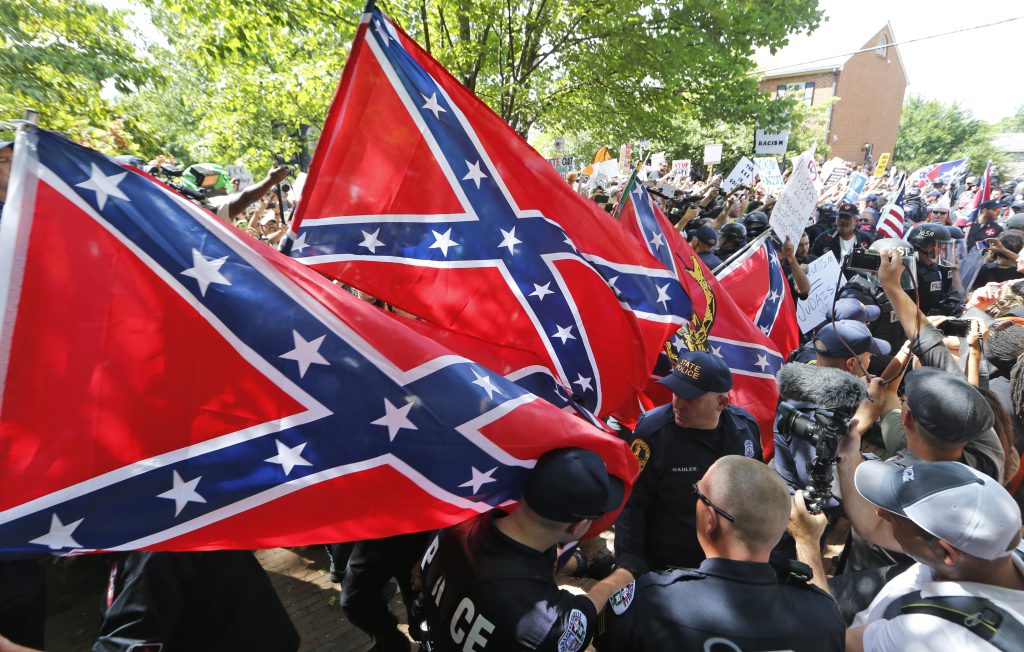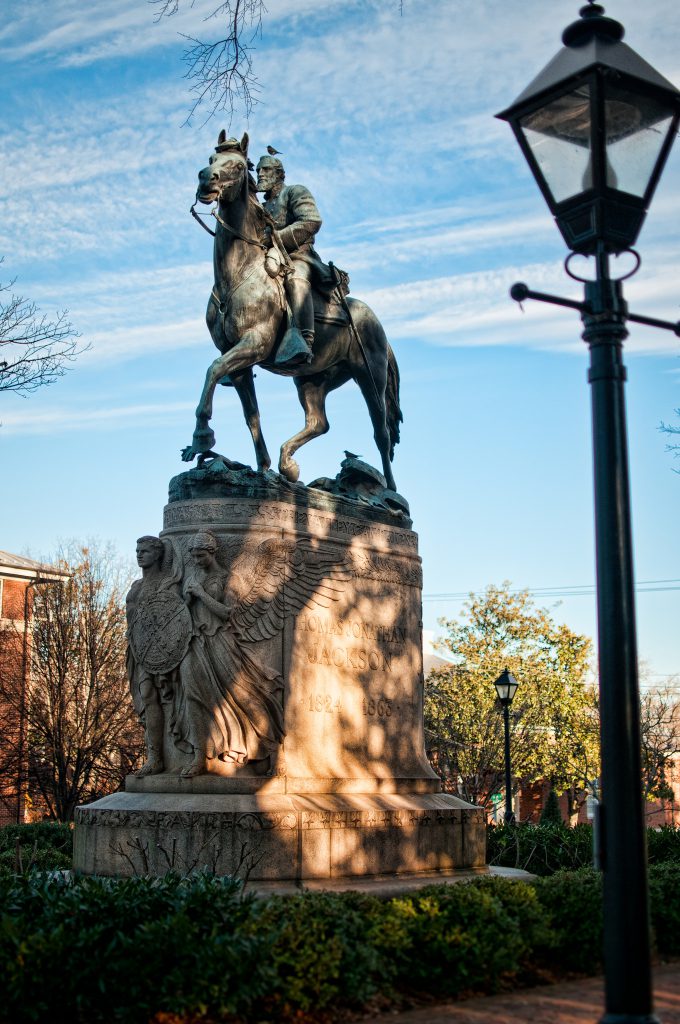The Ku Klux Klan and the Value of Shame

On July 8, Charlottesville, Virginia, witnessed the value of shame. On that day, the Ku Klux Klan (KKK) arrived to protest the city council’s decision to rename two public parks and to remove the statues from each that commemorated Confederate war heroes Robert E. Lee and Thomas “Stonewall” Jackson.
To many of us who reside in the city, the Klan’s presence was an outrage. But it was also an occasion to experience shame: the shame our country’s racist history brings on all of us. And it was an occasion to use shame as a means to denounce the beliefs of a group celebrating that history.
Founded in 1865, the white supremacist Ku Klux Klan that flourished in the early 1900s still exists as a collection of local, disjointed groups using the KKK name. Despite declines in the late 1990s, the number of KKK chapters increased from 72 in 2014 to 190 in 2015; the Southern Poverty Law Center estimates current Klan membership at 5,000 to 8,000 people. The success of Donald Trump in the recent U.S. presidential election has been used by some to grant a new legitimacy to the voices of the KKK and similar “alt-right” groups that celebrate white nationalist history.
Like many U.S. cities with Confederate monuments, Charlottesville has recently debated whether it should change the names of its two downtown parks, as well as remove the Lee and Jackson statues from them. While the city council voted on June 5 to rename Lee Park and Jackson Park (as Emancipation Park and Justice Park, respectively), the fate of the statues remains caught in legal limbo. The Klan came to Charlottesville to defend both the statues and the history they represent.
Local opposition formed immediately after the North Carolina–based KKK group requested a rally permit. On the day of the event, a crowd of about 1,000 counterprotestors began to assemble two hours before the scheduled Klan rally. I joined a group that included people from many walks of life: clergy, University of Virginia students and faculty, business owners, agriculturalists, military veterans, medics, legal aides, and leftist activists.
Barricades, protected by several dozen police, had been erected to maintain space for the rally. As we awaited the Klan, some of the counterprotestors marched around the barricades, chanting, blowing noisemakers, and carrying signs.
The most common signs said “Black Lives Matter” and related messages. Others were explicitly anti-KKK, or anti-Trump. One of the more imaginative read, “We’ll trade racists for refugees.”
When the few dozen Klansmen arrived and were ushered into the permitted space, it was difficult to see them through the surrounding crowd; only their Confederate flags were visible. The counterprotestors’ chants shifted from impersonal slogans to direct responses to the Klan members: “Racists go home,” “Fuck you,” and “Shame on you.”
“Shame on you” was the most powerful of these messages. “Fuck you” is aggressive and invites aggression in return, without advancing political discussion. Calling people “racists” doesn’t constitute an argument; it merely invites name-calling in response. Telling Klansmen to “go home” suggests that their messages are acceptable in the private domain. Worse, it says Klan members live elsewhere, apart from us.
But racism exists in all U.S. communities, which is why “shame on you” was the most appropriate chant. It expresses a community’s moral censure, directed at people who are part of the community. It says, “We are all in this together; your behavior brings shame on you, and by extension, on us. Your beliefs violate our collective values.”
The Klan says that the removal of the statues of their heroes “erases” history, which they equate with falsifying it. But their argument ignores the distinction between studying history—reading, writing, and learning about the past—and glorifying selected elements of it.
Read more from the archives: “Why We Need a Truth Commission on White Supremacy.”
In Charlottesville, the Thomas Jefferson Foundation has worked for three decades to incorporate African American history into the history taught at Monticello—the home and plantation of Jefferson, the third U.S. president. In addition to educating the public about Jefferson’s political, scientific, and literary accomplishments, Monticello presents the history of the more than 600 enslaved people Jefferson owned during his lifetime. This chapter of Jefferson’s story does not celebrate him; to the contrary, it has the potential to help us learn from history and makes it more difficult for our community to commemorate Jefferson’s legacy. Yet the foundation’s work has enriched, not erased, our history.
Charlottesville is expected to be the target, on August 12, of a larger demonstration by “alt-right” organizations that are planning to defend the statues and to “stand up for white people,” as one of the Unite the Right event organizers put it. Those of us who felt compelled to speak out when the Klan came know that we will have to speak out again. Ultimately, to take part in a debate about national history is to take part in a debate about what kind of moral order we as a society should embrace.

































